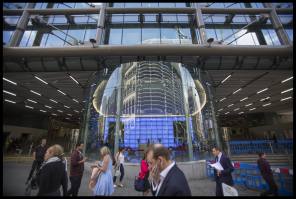

Bank base rates may rise as early as August, prompting Toby Nangle, manager of the Threadneedle Dynamic Real Return fund, to take a defensive positioning against UK interest rate risk.
The £1.4bn fund, which he has run since its launch in June 2013, has been taking cautious positions in short-dated securities, largely as a hedge against what Mr Nangle believes to be an imminent interest rate rise risk.
He said: "We have quite a large proportion of short-dated corporate bonds in the portfolio, as these are a reliable, low-volatility addition to the portfolio.
"They are not exciting, and won't make people rich but they serve as a good anchor, especially when it comes to interest rate risk."
He said while the team did not expect any 'significant' rate rises, he does expect incremental rate rises, starting this August.
Mr Nangle said: "This is not because the UK is experiencing strong levels of growth, and any poor Brexit outcome could see the rises reversed or eliminated.
"But the UK, as a highly developed economy, has a useful bond market for policy makers. It allows central banks to run counter-cyclical monetary policy and I believe over the next decade, one could hypothesise any monetary policy could be put at risk by courses of action the government may or may not take."
The portfolio has an 18.5 per cent holding in the Threadneedle Sterling Short-Dated Corporate Bond fund.
However, he said he did not believe the tightening of quantitative easing [by central banks] would lead to a bond bubble bursting, as "we don't think there is a bond bubble".
He said: "The historically useful characteristics of holding longer-dated government bonds do not really have a place in today's mixed-asset portfolios. The 35-year bond bull market seems to have run its course and we are now in a more choppy, sideways-moving bond market."
Despite his view on government bonds and interest rate risk, Mr Nangle said the fund - which has outperformed its peers in the UK IA - Targeted Absolute Return sector over the past five years - was not shifting away from risk assets, however.
He said: "We still have a fairly constructive view towards risk assets – although there are a few caveats. One is the impact that a growing trade war might have on company level earnings.
"I think we are seeing the potential beginning of a bear market in PE ratings but if this can be offset by a continued rise in earnings, this is not necessary a bad thing – you are locking in valuation without giving up earnings growth.
"What brings us to an end is if future cash flows stop going up or start going down and this is not on our horizon right now."
The fund returned 5.1 per cent over the past five years, compared with the sector median return of 2.1 per cent (bid-to-bid, net returns readjusted, according to Morningstar. Data as at 30 June).
However, while the manager thinks the overall US environment is "still at strong levels", he warned: "We are conscious this is still subject to the tweets of a man, which deserves increasing levels of risk premium."
The fund currently has no exposure to the US, based on better fundamentals from existing holdings in the portfolio.
Where he does see pockets of weakness are in some emerging markets. For example, the fund had carried approximately 8 per cent exposure to Mexican government bonds, built up over 2016 and 2017, but a couple of months ahead of the election the team locks in the gains that were coming through.
"Timing the exit seemed to have been opportune. In that subsequent weeks you have seen emerging market debt largely weaken across the board – such as in Turkey, Indonesia, Venezuela. These were country-specific things that came all at once and this spread across the piste."
The team has repositioned into South African government debt, at approximately 2 per cent of the portfolio, after the transition of government from Zuma to Ramaphosa.
Mr Nangle said: "As a dynamic fund manager it is important to think about how risk is going to be rewarded over the next 12 to 24 months and to build up a risk budget. This is why it is important to put together assets with different levels of volatility: and some very volatile in small proportions and some low volatility in large proportions.
"The past five years have been a good environment for taking portfolio risk and this has delivered strong returns but tactically we will take more defensive positioning where it is appropriate. Everything has to earn its place at the end of the day".
simoney.kyriakou@ft.com



